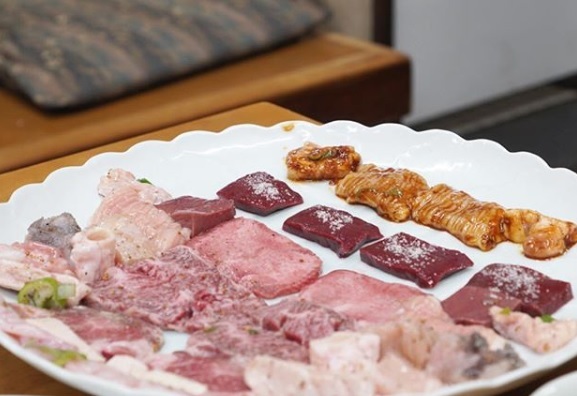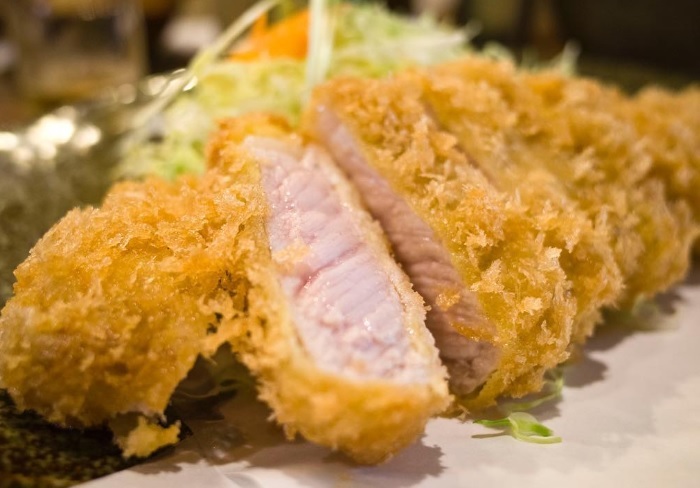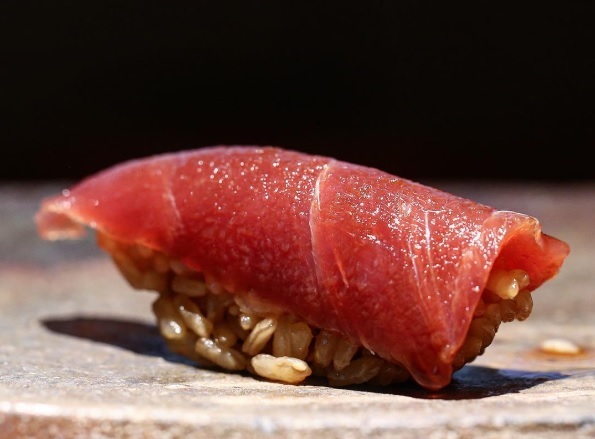ChuToroZuke's Sake Chroncicles Vol. 2 - about ordering sake at restaurants in Tokyo
Today we will cover sake at various restaurants in Tokyo, the details around a sake menu or selection, and ways to go about ordering.
High-Level Sake Selection - An Overview
Some restaurants go to great lengths to put together a sake list for their menu. However the list can be unpredictable, as some selections are staples that persist on the menu until the owner or sommelier decides to put it out of rotation. Some may be special limited offerings that are available only for a short time. Certain bottles from particular breweries may be easy to get, and some are so highly sought after and coveted, that inventory will vary according to the season, the number of cases produced by the brewery, distribution, demand nationwide, and in some instances literally winning the lottery to get a single offering.
In a way this is exciting, interesting, and possibly frustrating at the same time. It is likely that if you visit the same restaurant within a month, the sake menu will change. Sometimes you don't even get to see a menu, as it may be assumed that visitors to Japan are not familiar with sake and their regional brands, or whatever restaurants can buy change frequently. Whatever they recommend to pour for you may be based on tastes, profiles, or just a means of rotating their inventory out (or helping to reduce it).
What you may see at various restaurants
Some restaurants will have a sake menu available and some do not. In my experiences and from what I have observed so far:
- sake menus are written mostly in Japanese (kanji for the most part). If you can read and know the sake names, as well as the region (prefecture) then it may be a bit easier to order.
- very few restaurants will have a sake menu in English. Sushi Suzuki for example, has their alcoholic beverage menu written in English for visitors, but it is the Japanese sake names only.
However if you are not familiar, it may also be daunting to navigate.
- some restaurants due to their size, have a very limited sake selection on the menu. A lot of this is due to storage space, in combination with their beverage selection policy (they may choose to feature more beer, shochu, or even wine than sake). It is also possible that they have off menu sake, but will not offer it to visitors unless you really know of them and seek them out, or it could be on a special menu.
In an extreme case, Shimizu (Shimbashi) only has one sake available during a previous visit.
- quite a few high end sushi omakase restaurants will not have a sake menu due to rotating stock and in some cases limited supplies of rare sake to celebrity status sake. Not to mention the effort required to print out a sake menu that may change the next day or two. Examples include but are not limited to: Kurosaki, Zoroku Yuzan, Sushi Namba, Takumi Shingo, Hatano Yoshiki, Sushi Marufuku. The places that have rotating stock and are serious and thoughtful, usually carry a wide variety of profiles and styles to cater to people of different drinking levels and experiences. This allows for flexibility to enhance the customer's experience.
- certain restaurants are very well known for specializing in particular breweries. For example: Kirakutei (Kugayama) has a special relationship with their suppliers to carry some rare Jikon that you almost
cannot buy at retail in Tokyo. Kushikoma and Akaoni (oden izakaya and sake bar/izakaya) having some Juyondai, these two in particular very popular with Juyondai sake fans from outside of Japan. Last but not least Tamanegiya for Isojiman (if you go with a regular, you may be able to taste a vertical of a particular Daiginjo, all depending on what the master has available).
- some restaurants will sell sake by the glass or carafe. Some will be as specific as to mention a pour ~90 mL or 180 mL with the price. Or the glass will be written as one "go". Four "go" would be the equivalent of a regular bottle (720 mL). Very rarely will you be able to purchase an entire bottle of sake. The thinking is that variety is the spice of life, and it is enjoyable to try different sake through the meal.
- for many smaller specialist sake bar and izakaya neighborhood style restaurants, it is usually more fun to ask the owner or host to pour their recommended, which is generally more enjoyable and fun. This is actually a more fun and casual way to explore, as most of them are more affordable, fresher due to faster inventory/stock turnover, and eclectic (as well as seasonal). If you are very lucky, the owner or host is also a huge fan (sometimes to the point of being a geek or "otaku") that they will think of out of the box ways to create an even better match or experience (e.g. trying a sake warm, or serving a sake that is aged longer than normal under proper controlled conditions).
How to explore sake from a restaurant:
The ideal way of maximizing your experience at a high end restaurant is when you request a booking with your concierge service, to have them ask the restaurant in advance for someone who can communicate with you and help with sake recommendations.
The next thing you can do is if you are already familiar with sake, to research the restaurant in advance. If it is a famous well visited restaurant, chances are you will find pictures of sake users uploaded to sites like tabelog, or instagram photos (search by geotag). For places like Amamoto, many users have already uploaded their collage pictures of all sake. If there is a sake you would like to try, you could ask for its availability based on an uploaded existing photo from tabelog (or social media), or ask for something similar to it.
If you ask for a sake menu and are told that it is not available, your only option is to just order by saying "sake please" (or sake onegaishimasu, or nihonshu osusume onegaishimasu - please give me your recommended pours of sake) and you tell them when to stop or if you want to switch to something else. At this point the restaurant has no idea of your tastes, and you do not know what they have. This can be a fun ride, so try to enjoy it! Plus you never know if you will get a once in a lifetime opportunity to try something that has cult status, if at a high end restaurant! You can also do this at any establishment that is new to you, even a sake bar themed eatery. If you are lucky, the proprietor (or proprietress) is either a sake geek or certified sake sommelier (kizake-shi) and can help guide you to find something that works with their food. Treat every taste as a learning opportunity and a unique encounter, it is also a great way to train your palate! Remember to drink water or tea in between as well.
You may also ask the sommelier or host/hostess (in a more traditional Japanese restaurant, the manager/lady in charge or "okami san" typically handles the sake as well) for recommendations.
It may help more if you can inform of your tastes. Do you prefer dryer sake (karakuchi), sweeter (amakuchi), or more umami centric (umaguchi)? Or do you have brands that you like, which if English communication is not an issue, would be helpful to help guide your selection. You can also inform if you prefer Junmai, Junmai Ginjo, Junmai Daiginjo, or Daiginjo and let the restaurant decide for you.
The downside is that you may be given sake that suits your taste but may not be the best pairing with food, as some profiles work better than others depending on what you are eating with.
When you receive the sake:
Usually a sake will be brought to you at the table or counter and poured. Hopefully you have already asked for permission to take pictures when you first sit down. Take a picture of the bottle so you have something to remember it by. It is also helpful to reference photos of what you tasted before in the future to assist a restaurant to help with your next sake selection. Don't forget to take pictures from different angles as sometimes the more useful descriptions or information may not show from one angle. Some bottles have more specifications on the back label, so consider taking pictures of that too!
If you were given a glass without the bottle, you could ask to see the bottle (or ask for the bottle to take pictures, if you already have permission to take pictures of the food
the restaurant should not see this as being a bother as they are probably used to this). This is usually not a problem if the sake has celebrity/cult status and most restaurants that allow photographs already know.
Enjoy, and kanpai!
Writer: ChuToroZuke
ChuToroZuke is an avid enthusiast of Japanese cuisine and culture and remembers his first ever sukiyaki experience at the tender age of 6, particularly the magical combination
of dipping sukiyaki beef into raw egg and then chowing it down with a bowl of Japanese rice. However years later in adulthood, a passion ignited with a great explosion one evening 4 years ago, as a result of experiencing a bottle of sake with perfect otsumami and sushi at a favorite restaurant, that was so impactful and memorable. This lead him down a geeky journey of discovering sake as well as rediscovering food with sake. Suddently traveling to Tokyo and dining at various establishments (high end and low end) last few years became a whole lot more exciting, allowing this geek to deep dive and meet other fellow lovers of the beverage (and food of course).
It is with great pleasure and honor that he was invited to contribute to TokyoTableTrip, as a means of giving back to the community and help spread the word and love of sake, and to help promote sake in Japan from overseas.
Register account first.
Register










Comments 1
1
Leo Saito
chief editor, TokyoTableTripThis is part two of the series by Chutozozuke, a Japanese sake expert that I respect!